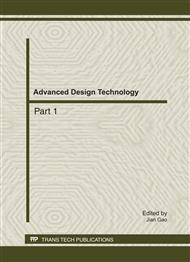p.2095
p.2104
p.2110
p.2114
p.2120
p.2127
p.2131
p.2135
p.2139
The Kinematic Influence Coefficient Analysis of a Parallel Stabilized Platform Testing System
Abstract:
A testing system is constructed by connecting two parallel mechanisms in series to assess the performance of the 6-DOF parallel stabilized platform. In addition, a conception, the kinematic isolation factor, is proposed to describe the capability of the parallel stabilized platform and is combined with the kinematic influence coefficient method to form the first and second order influence coefficient matrixes as well as the velocity and acceleration expressions. The definition of the kinematic isolation factor simplifies the establishment of the kinematic equations, and the acceleration formula especially appears a concise format. These kinematic equations are solved according to a certain turbulence signal of a moving carrier, and the results indicate that the kinematic isolation factor describes the parallel stabilized platform’s capability that it correctly compensates the motion of the carrier and evince that the testing system effectively evaluates the performance of the parallel stabilized platform.
Info:
Periodical:
Pages:
2120-2126
Citation:
Online since:
August 2011
Authors:
Price:
Сopyright:
© 2011 Trans Tech Publications Ltd. All Rights Reserved
Share:
Citation:


